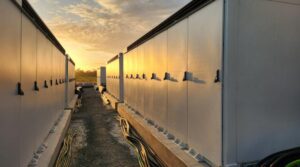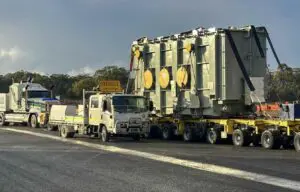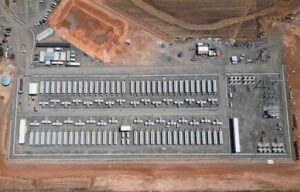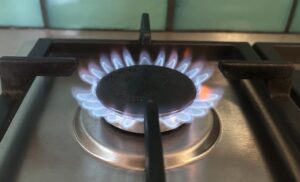Japanese grid-scale battery company PowerX is planning an innovative method for accelerating renewable energy adoption, announcing a plan to build autonomous battery ships to transfer offshore wind electricity.
Traditionally, electricity generated by offshore wind farms is transferred to national and local power grids using subsea cables which run from an offshore substation to onshore, grid-connected substations. Few people will have considered there was a need to modify this relatively straightforward process.
However, PowerX, a Japanese battery company launched this year, has considered the requirements of offshore electricity generation, including a workaround on power generation location.
Japan has set itself a target of generating 36-38% of its power from renewable energy by 2030, a major upgrade from its previous goal of 22-24%, and one which will necessitate a massive boost to the country’s offshore wind capacity.
Currently Japan only has 20MW of offshore wind, but this will need to ramp up to 10GW by 2030 and continue to anywhere between 30GW and 45GW by 2040.
However, Japan is surrounded by deep coastal waters, which makes it difficult to build traditional offshore wind farms that sink turbine foundations into the seafloor.
Floating wind turbines could be a solution for countries like Japan, but that technology remains in the relatively early stages of development – though is accelerating rapidly.
PowerX has envisioned a different answer, however, which negates the need for offshore wind farms to be located in proximity to where the electricity is needed.
Specifically, by using Power Transfer Vessels – essentially giant large-scale floating batteries, autonomously travelling between offshore wind farms and onshore substations – electricity can be generated where it is most cost efficient to build an offshore wind farm and transferred anywhere in the country.
PowerX will design and build an automated Power Transfer Vessel with a massive battery payload integrated into the ship’s controls so as to transport offshore wind power to shore.
Meanwhile, the benefits of such a robotic power transfer could be significant. Typically, undersea power cables require expensive construction, result in substantial environmental impacts, and can be damaged by natural disasters.
PowerX also believes that a Power Transfer Vessel would be comparatively resilient to natural disasters, would require less time and cost for development, and significantly reduce the impact on the environment.
The first model PowerX has proposing for its Power Transfer Vessels is the Power ARK 100, the first in a Power ARK series.
A 100TEU trimaran specially designed for transferring renewable energy in Japan’s coastal waters, PowerX expects to be able to complete the first ship in 2025, which will be able to carry 100 grid-scale batteries amounting to around 200MWh of power – equivalent to the total electricity consumption by 22,000 Japanese households in a single day.
Able to travel up to 300-kilometres running only on electricity, the Power ARK 100 will be equipped with a suite of navigation and sensor technology including sonar, lidar, AIS, radar, weather sensors, and autonomous navigation software and sensing equipment.

PowerX – whose non-executive directors including Paolo Cerruti, co-founder and COO of Northvolt; Caesar Sengupta, ex-VP and General Manager at Google; and Mark Tercek, former CEO at The Nature Conservancy and Former Partner at Goldman Sachs – also announced that it will build a gigafactory in Japan to produce batteries for the Power ARK series, and which will have annual production capacity of 1GWh by 2024, scaling to 5GWh by 2028.










